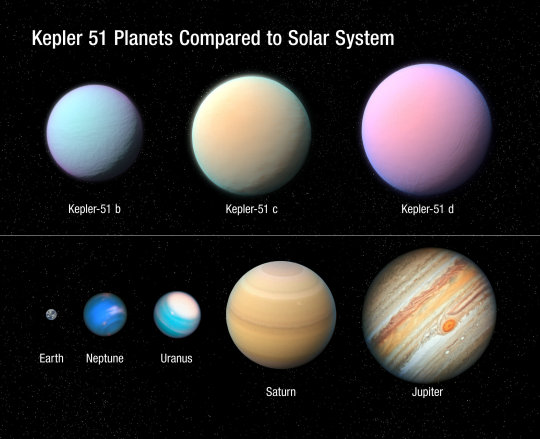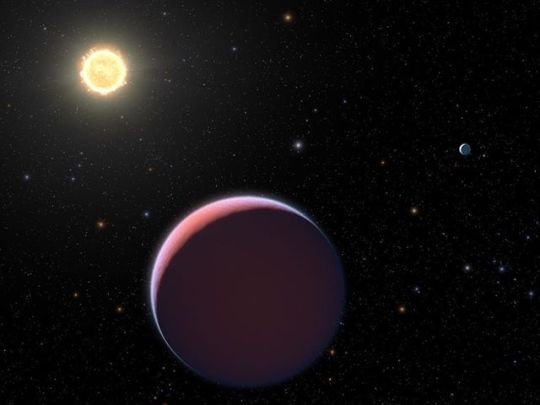#superpuff-planets
Explore tagged Tumblr posts
Link
Some puzzling planets called superpuffs could be Saturns in disguise.
These exoplanets appear very large given their masses, suggesting that they have densities like cotton candy. Astronomers have struggled to explain how these planets could have turned out so fluffy (SN: 11/30/15).
“People had been thinking of complicated ways to explain these mysterious planets,” such as dust storms leaving a planet, says theoretical astrophysicist Anthony Piro of the Carnegie Observatories in Pasadena, Calif.
Now, Piro and exoplanet scientist Shreyas Vissapragada of Caltech propose a simpler explanation. Instead of being outsized for their weight class, some superpuffs could sport wide rings that make the planets appear bigger than they really are, the researchers suggest February 28 in the Astronomical Journal.
“This seemed like such a natural, kind of cute explanation,” Piro says. “We know of things like Saturn in our own solar system. Why can’t something like that exist in other solar systems as well?”
The duo considered 10 known superpuffs observed with the Kepler space telescope, and ran computer simulations to see if the planets’ girths could be due to rings.
The team found that because all of the superpuffs sit fairly close to their stars, their rings would need to be made of rock, unlike Saturn’s icy rings (SN: 8/23/17), to avoid melting away. And, as a result, the proposed rocky rings can’t extend too far from a planet, or the rocks’ gravity would pull them together into moons.
That means that the three superpuffs orbiting the star Kepler 51 can’t be explained by rings — the planets appear big enough that any rocky rings they might have would turn into moons, the team found. But the other seven worlds might have rings and are worth checking, Piro says.
Following up on these planets might need to wait for NASA’s sharp-eyed James Webb Space Telescope, scheduled to launch in 2021 (SN: 4/19/16).
24 notes
·
View notes
Link
an early stage of planetary development has been identfied, a class of ultra low density “superpuff” planets, of which none exist in our system

(artists’ illustration)
24 notes
·
View notes
Photo

These ‘super puff’ planets have the same density as cotton candy 🪐🪐🪐 https://buff.ly/380SZqh⠀ ⠀ #JaimeBonettiZeller #SuperPuff #SuperPuffPlanets #CottonCandy #Space https://ift.tt/2NuKFY3
0 notes
Text
Strange 'Super-Puff' Planets Floating in Space Might Not Be What We Thought
Strange ‘Super-Puff’ Planets Floating in Space Might Not Be What We Thought
As we find more and more exoplanets in the Milky Way – numbering in the thousands now – astronomers are discovering some strange objects that don’t exist in the Solar System. One such phenomenon are the strangely fluffy “super-puff” planets – the size of gas giants, but way, way less massive.
Exactly how these planets can exist has been a puzzle to astronomers. In extreme cases, a…
View On WordPress
#&quot#dips#exoplanet#exoplanets#floating#large#mass#piro#planet#planets#rings#size#solar#Space#star#Strange#SuperPuff#system#thought
0 notes